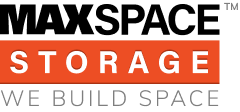Most real estate investors have one goal: make every unit as profitable as possible. Successful investors specializing in multifamily rental properties are always looking for ways to increase their net operating income. The term “net operating income” simply refers to a formula that investors use to calculate the profitability of a given property in their portfolio. Unlike a simple balance sheet, net operating income looks at every dollar a property makes and subtracts all the expenses required to keep that property operating. In order to determine the NOI on your property, you subtract operating expenses from total profits. Obviously, higher numbers are better. If you’re not satisfied with your multifamily rental property’s net operating income, there are some simple steps that you can take to improve it.
Increase Rent
Rent is increasing across the United States, and even more significantly in the biggest cities. While you obviously don’t want to price yourself out of the market, you should certainly consider increasing the base rental fees in your multifamily property when it’s time for lease renewal. If you’ve watched the news at all in the last few months, you’ve probably heard about rising inflation. Even if you haven’t seen it on the news, you’ve probably noticed it at the gas pump and at the grocery store. While you certainly don’t want to cause your tenants to have “sticker shock” when their leases expire, you can put language in the lease that lets them know that monthly rental fees will increase based on inflation.
Install Storage Units
It has been reported that around 10% of American households are paying for self-storage. There’s a good chance some of your renters are already paying for self-storage, and if you don’t offer these services on-site, you’re missing out. The same study that discussed the number of people paying for self-storage also indicates that around half of those people keep their self-storage units for more than one year. Max Space Storage can help you add new revenue streams to your property while also creating a higher perceived value enabling you to charge more rent.
Increase Laundry Fees
When many landlords think about increasing their laundry fees, they think about adding mechanisms to washers and dryers that require renters to put quarters in the machines to use them. While that’s certainly one strategy, you have other options at your disposal. For instance, you can charge a monthly rental fee for the washers and dryers that are included in your units. This fee doesn’t have to be large, as you can charge as little as $10 per month for in-unit laundry services. Over a year, you can make $120 more from every unit, which adds up quickly in a multifamily complex.
Add Utility Income
This is becoming a very popular trend among landlords, and there’s no reason to think it’s slowing down anytime soon. The best way to go about adding utility income is to meter every unit in your multifamily complex. This helps you shift the cost of monthly utilities onto the renters. Since renters will be responsible for putting utility bills in their own names and paying those bills on their own, you may have to shift your monthly rents down, but in many cases, you can increase utility income at a higher rate than you can increase rental fees. Research which of the two options will provide the most income and make an informed decision.
Get More Out of Parking
Finally, you should consider taking steps to maximize parking revenue. Renters, especially those in large metropolitan areas, generally expect to have to pay for parking. In fact, parking fees in some of those larger areas can run as high as $100 per month! That’s especially true if you’re offering underground or covered parking. This provides more freedom for renters, as those without vehicles don’t pay the parking fee, and those with multiple cars can rent additional spots.
Make sure you’re not leaving money on the table as a landlord. Evaluating when and where you can increase your NOI can be the difference in finding success as an investor and barely getting by.

